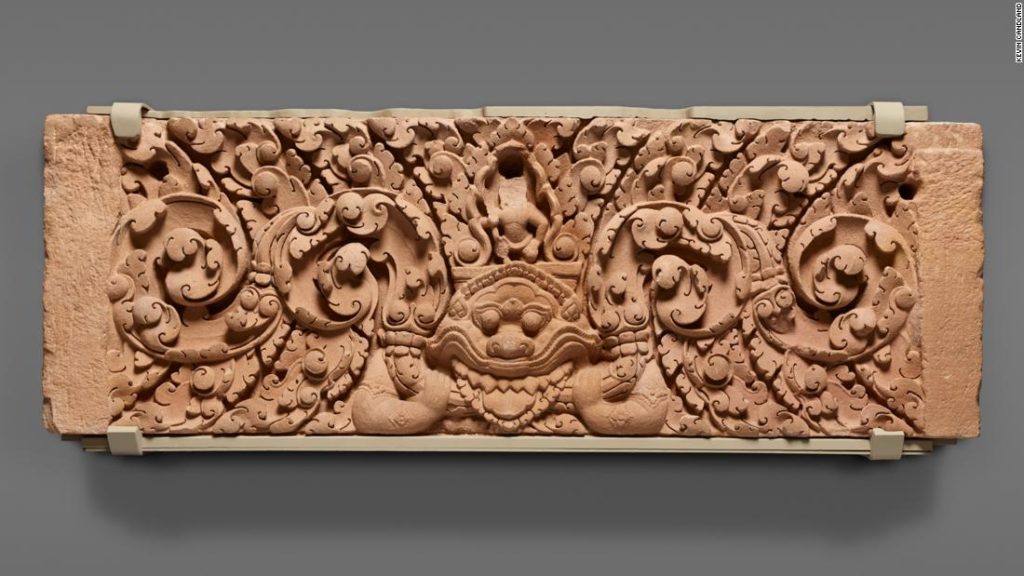The stone lintels had been housed at San Francisco’s Asian Art Museum since the 1960s. But the city formally handed the artifacts back to Thai officials at a ceremony in Los Angeles on Tuesday.

Thai dancers perform during a ceremony in LA marking the items’ return. Credit: Ashley Landis/AP
The Asian Art Museum’s deputy director, Robert Mintz, also welcomed the items’ repatriation.
“In general, we are very happy to know that these objects are returning to Thailand, where we have long believed they belong,” he said in a phone interview. “So, we are supportive of this and quite delighted that they have made this final step.”

The lintels originated from temple sites in northeast Thailand. Credit: Kevin Candland
Disputed origins
Mintz added that Brundage had donated one of the lintels and “facilitated the purchase” of the second. “At that time … the assumption was that dealers had legitimately acquired them from dealers in Southeast Asia,” he said.
However, Mintz added that museum researchers were unable to locate copies of export documents that could prove the Thai government authorized the lintels’ export.
“Because the dealers who sold these works to Mr. Brundage are no longer are alive, we will never be able to determine whether those documents ever existed,” he said. “Certainly, we can say we don’t have them. So, as a result, we … say these objects really belong back in communities from which they came.”

Thai and US officials participated in the ceremony on Tuesday. Credit: Ashley Landis/AP
Announcing the settlement in February, Tatum King of Homeland Security Investigations, which led the investigation, said in a statement that “the successful outcome of this investigation helps restore Thailand’s cultural heritage for the appreciation and study of this and future generations.
“The theft and trafficking of cultural artifacts is a tradition as old as the cultures they represent,” he added.
Mintz said that the Asian Art Museum has stepped up efforts to ascertain whether its collection contains illicitly acquired artifacts.
He added that curatorial staff have begun “systematically investigating” its collection, “to make sure that we have as complete an understanding of the provenance of each object as possible — and to call out those objects that have gaps in their provenance.”
You may also like
-
Afghanistan: Civilian casualties hit record high amid US withdrawal, UN says
-
How Taiwan is trying to defend against a cyber ‘World War III’
-
Pandemic travel news this week: Quarantine escapes and airplane disguises
-
Why would anyone trust Brexit Britain again?
-
Black fungus: A second crisis is killing survivors of India’s worst Covid wave

